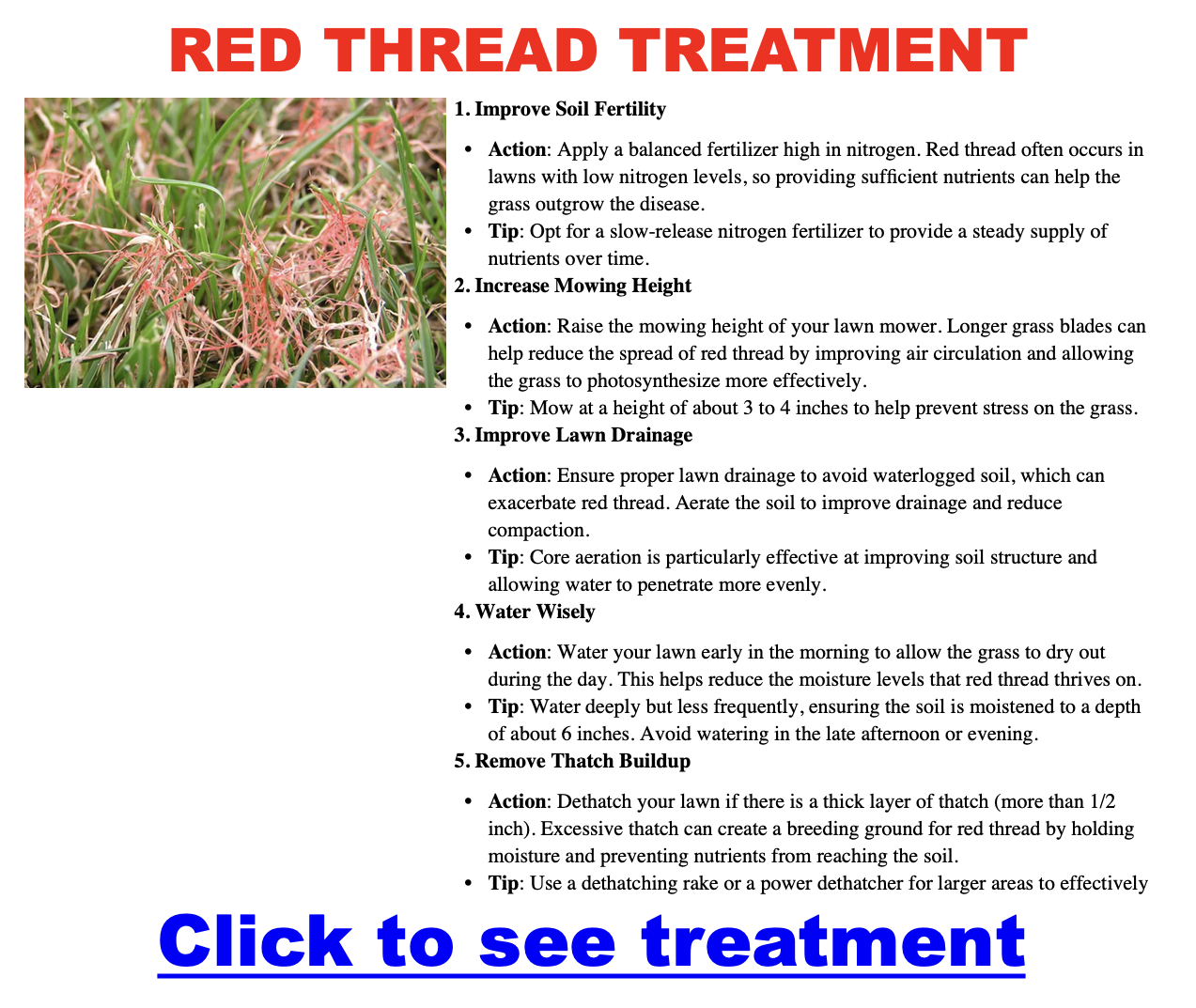Why is my grass turning red
You step outside, expecting a lush, green lawn, but instead, you see red or pink patches spreading through your grass. Before you panic, know this: it’s a common issue, and if you catch it early, it’s very manageable. However, if ignored, it could weaken your lawn and make it more vulnerable to other diseases and pests. Here’s what it means and exactly what to do about it.
Why Is Your Grass Turning Red?
The most common reason for red or pink-colored grass is a fungal disease called Red Thread. It often appears during cool, damp weather and is most common in spring and fall. While it looks alarming, it rarely kills grass—but it does signal that your lawn is under stress and needs help to recover.
Other possible causes include:
- Cold stress, especially in early spring or late fall (certain grasses can turn reddish in response to sudden drops in temperature)
- Nutrient deficiencies, like a lack of nitrogen or phosphorus, which can affect your lawn’s color and vigor
- Specific grass varieties (such as certain types of fescue or bluegrass) that may naturally change color in cooler weather
How to Identify Red Thread
Look closely at the affected areas. Here’s what you might see:
- Patches of grass with a reddish or pinkish tint, often irregular in shape
- Thin, red or pink thread-like structures (mycelium) extending from the grass blades
- In some cases, the patches may appear tan or bleached as the infected blades dry out
This is a textbook sign of Red Thread fungus, especially if the weather has been moist and mild, and the lawn has not been recently fertilized.
What Causes Red Thread to Develop?
Red Thread thrives when lawns are undernourished or stressed. These are the main triggers:
- Low nitrogen levels in your soil, leading to weak and vulnerable grass
- Consistently wet conditions, such as prolonged rain, frequent dew, or late-day watering that keeps grass damp overnight
- Poor airflow and excessive thatch buildup, which trap moisture and create ideal fungal environments
- Improper mowing practices, like mowing too short or with dull blades that damage the grass
What You Should Do Right Now
Here’s your simple action plan to restore your lawn’s green color and stop the spread:
1. Apply a Nitrogen-Rich Fertilizer
- Red Thread often clears up on its own once the lawn is properly fed.
- Use a quick-release fertilizer to provide an immediate nutrient boost.
- Follow up with a balanced slow-release fertilizer for sustained health.
2. Water Early, Not Late
- Water infrequently, allowing the soil to dry between sessions.
- Always water in the morning to allow the grass to dry out during the day and prevent fungal growth.
3. Improve Airflow and Reduce Thatch
- Aerate in spring or fall to relieve soil compaction.
- Dethatch if the layer of dead grass and roots exceeds 0.5 inches.
- Prune nearby shrubs or trees to improve sunlight and air circulation.
4. Raise Your Mower Height
- Keep your mower set to 3–3.5 inches, which helps the grass stay healthy and develop deeper roots.
- Clean your mower blades regularly to prevent spreading fungal spores.
5. Use Fungicide if Necessary
- If Red Thread is severe or continues to spread despite good care, a lawn fungicide may be necessary.
- Choose one labeled for Red Thread (e.g., Scotts DiseaseEx, BioAdvanced Fungus Control).
- Always follow label instructions and apply only when truly needed.
How to Prevent Red Thread in the Future
A healthy, well-fed lawn is your best defense against Red Thread and other lawn diseases:
- Feed your lawn regularly, especially in spring and fall, using nitrogen-rich fertilizer.
- Avoid overwatering, and ensure your lawn drains well to prevent soggy soil.
- Mow properly and consistently, keeping grass at a healthy height.
- Aerate and dethatch as part of your seasonal lawn maintenance routine.
- Test your soil every year or two to monitor nutrient levels and adjust fertilization accordingly.
Final Thoughts
Red or pink grass is more than a cosmetic issue—it’s a signal that your lawn needs attention. Fortunately, most cases of Red Thread can be reversed with better lawn care, especially proper feeding and mowing habits. Acting quickly not only restores your lawn’s appearance but strengthens it against future problems.
Take action now, and in just a few weeks, you can go from splotchy red to a lush, healthy green lawn.
